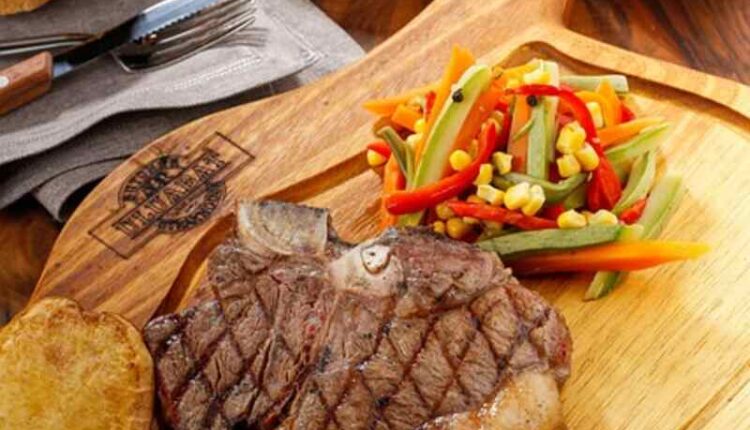When you look at the menu, do you have trouble comprehending what everything means? Do you know what the word means in a different setting but struggle to apply it here? Do you long for the ability to speak 12 languages so that you can decipher the meaning of the words next to the chicken on the menu? Even after 22 years in the kitchen, I feel the same way. I’ve decided to provide the meanings of some of the most frequent food-related terminology because I suspect I know what they imply more than the average customer.
First, there are the various potential guests at your catering event, including:
The chef is the head cook and gets called “Chef” by everyone else. The term “Chef” refers to both the position and its holder. The term “chef” can also refer to someone with formal training in the kitchen from an accredited cooking school, as opposed to “cook,” who lacks such activity. Last but not least, a cook could be a twenty-year kitchen veteran assisting a “chef” who has just graduated from culinary school.
The maître d’hôtel oversees the restaurant’s front-of-house operations. The maître d’hôtel is the head of the service crew. It is in charge of things like greeting visitors, showing them to their tables, taking reservations, ensuring they’re happy with everything, and ensuring they enjoy their meal.
The “front of the house,” often known as the “dining room,” is the public space of the catering establishment. In this context, servers, bartenders, and hosts/hostesses are considered “Front of House Staff” in this context.
A sommelier is a professional who specializes in wine. The title of “Sommelier” is reserved for those who have completed extensive wine training.
The second piece of information is the names of some of the catering items:
Originally from Egypt, dukkah is a blend of hazelnuts, sesame seeds, coriander seeds, cumin seeds, black pepper, and sea salt flakes. This flavor goes particularly well with lamb or vegetables cooked in a dukkah-based spice blend.
Canapes are a type of stand-up catering that often consists of little bites of food served on a decorative tray or individual plates. The interval between when visitors arrive and when they are seated can be bridged with canapes. Due to widespread usage, canapes are a former subset of hors d’oeuvres that are now synonymous with the original term.
The French translations of the word mignon are pretty, dainty, sweet, cute, tiny, or bite-sized. This is relevant to the catering industry since a filet mignon is often a thin slice of meat taken from the tenderest part of the animal. The narrow end of a fillet, as opposed to the thicker Chateaubriand end or the tenderloin, is the typical source of meat for a mignon. A chicken mignon is a cut of chicken typically wrapped in bacon and has a diameter roughly the same as an Australian 20c or 50c coin. Although traditionally, the mignon was cut from the small, cute, or bite-size end of the complete fillet, the term has come to encompass any eye fillet steak.
Small risotto balls, rolled in breadcrumbs and fried, are known as arancini. A fantastic canapé, arancini balls were initially created to use up leftovers. Wild mushroom arancini balls are a delicious vegetarian choice for any catered occasion.
Bhajia, pronounced “baa-gee,” is a cake common in Indian cuisine. The most well-known bhajia is the onion bhajia, which works as well as a starter, a side dish, or a superb canapé.
Crispy batter from maize or rice starch is the key to authentic tempura. It is a traditional Japanese batter used for frying seafood and vegetables. For extra crispiness in the frying process, refrigerate the batter between uses. Adding ice cubes to tempura batter keeps the batter cool for frying, but most people should avoid doing this because dropping an ice cube into hot oil can cause serious injury.
The Scandinavians have a long-standing custom of curing salmon using gravadlax (pronounced “grav-a-lax”). Salmon is cured in sugar, rock salt, and dill for two days. Some people add vodka or Pernod to the cure, which gives the salmon a unique flavor. Serve salmon gravadlax as an elegant appetizer by slicing it very thinly.
The smoother variety of pate is called pate, while the chunkier, meatier one is called a terrine. A terrine gets its name from the dish in which it is customarily prepared and served, with the long rectangular shape of the word acting as the inspiration for the terrine’s distinctive appearance. A terrine made of pig, poultry, and bacon with caramelized onion jam makes a delicious canapé.
Petit Fours are a light dessert typically served with a cup of strong coffee after dinner. Sweet petit fours are an excellent canapé option since their bite-size is suitable for finishing a gourmet canapé spread. Petit fours, from the French for “small oven,” can range from miniature versions of classics like mud cake and chocolate tart to exotic offerings like lemon tart, coconut delight, and white marble cake. A high tea stall might also benefit from petit fours.
A frittata is a baked egg dish similar to an omelet or a quiche without pastry. A frittata makes a great main dish or elegant appetizer. A favorite is a frittata stuffed with sweet potatoes, leeks, red peppers, and spicy jam. A frittata is an excellent vegetarian and gluten-free alternative in today’s modern dining scene, where special diets are becoming increasingly common. For a richer, more stable frittata without adding gluten, try folding some cream cheese into the egg mixture before cooking.
Regarding eco-friendly catering in South East Queensland, Pure Catering was the pioneer. Please visit our website for more details about our eco-friendly Brisbane catering for your event. Brisbane catering
The Sunshine Coast is home to Pure Catering, an Australian enterprise. Our combined 35 years of experience in the hospitality sector make us the go-to experts in most settings. Brisbane catering
Read also: https://shamir88bds.com/food/

